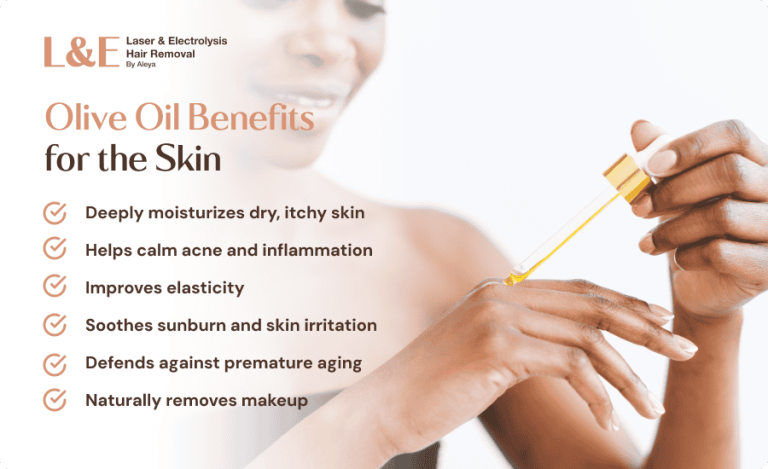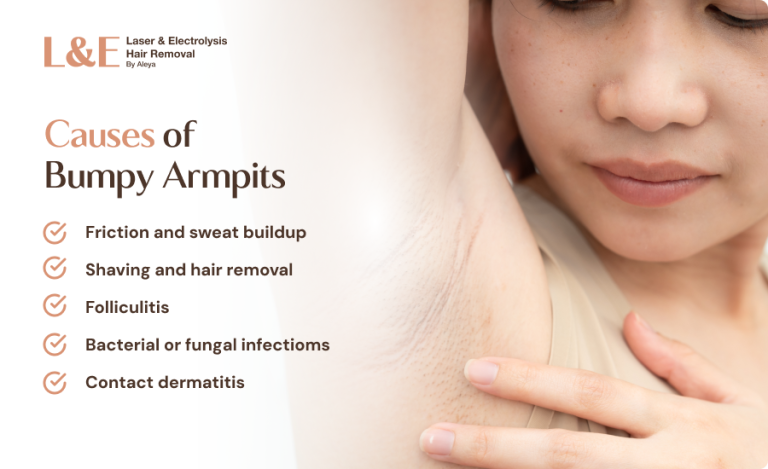5 Reasons You Get Laser Burns & How To Prevent Them
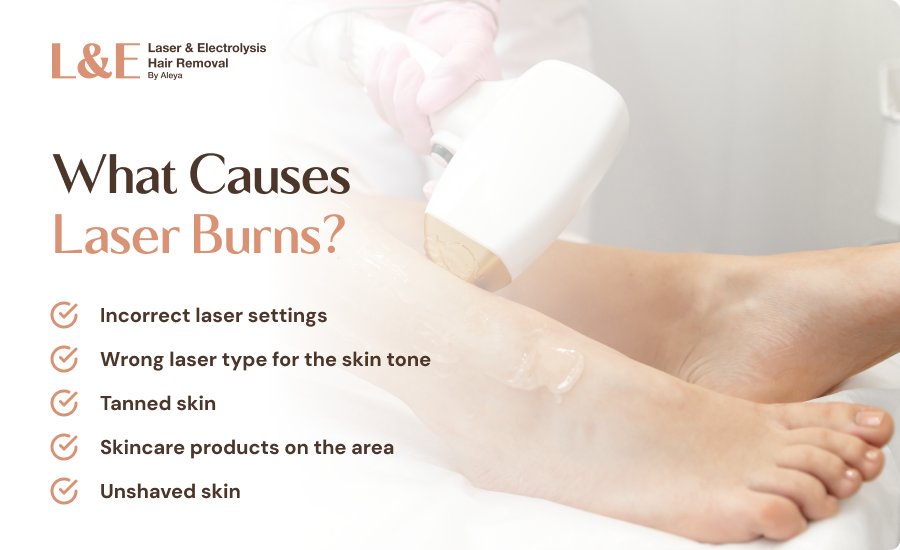
What Causes Laser Burns? Key Takeaways
- Laser burns can result from high laser settings, tanned skin, skincare products on the skin, unshaved areas, or using the wrong laser for your skin tone
- If you suspect a burn, cool the area, avoid touching it, and apply a soothing gel
- Mild laser burns usually heal in one to two weeks, while deeper burns might take longer
Laser hair removal delivers safe results when done correctly, but using the wrong settings, prep, or technology can cause burns.
In this guide, we will:
- Break down the top five reasons laser hair removal burns happen, and how to avoid them
- Share what you should do if your skin reacts to a laser hair removal session
- Answer the most common questions about laser hair removal burns and healing time
- Discover safe, professional laser hair removal you can trust at Laser by Aleya
5 Reasons Why Laser Burns Occur and How To Avoid Them
Laser hair removal offers a safe and highly effective way to reduce unwanted hair, but only when professionals use the right techniques and equipment.
Here are the most common reasons laser hair removal can cause burns and how you can avoid them.
1. The Laser Setting Is Too High
If the laser is set too high for your skin type or hair density, it can cause your skin to overheat.
The normal warming sensation might turn into a sharp sting, followed by redness, swelling, or even visible burns that can take days to heal.
To prevent laser hair removal burns, choose an experienced specialist who can adjust settings to your skin and hair.
At Laser by Aleya, we always start with a patch test and tailor each session for safety and comfort.
2. You Have Tanned Skin
One of the most common reasons people get laser hair removal burns is unexpected sun exposure.
Even a light tan, just from wearing shorts outside or sitting near a sunny window, can raise your risk.
That’s because lasers target pigment, and tanned skin has more of it for the laser to absorb.
To avoid burns in this situation, stay out of the sun and skip tanning beds for at least two weeks before your appointment.
3. You Applied Skincare Products on Your Skin
Lotion, deodorant, self-tanner, or products with alcohol or fragrance can react with the laser and cause burns or irritation.
To prevent this, keep the treatment area clean and product-free on the day of your session.
4. You Didn’t Shave Before Your Session
Here’s the kicker: if you don’t shave before your appointment, the laser can burn the hair above the skin surface, which might also burn the skin itself.
Always shave the area 24 hours before your session so the laser can target the follicle without burning surface hair.
5. The Wrong Laser Was Used on Your Skin Tone
Darker skin tones need specific lasers that go deeper and avoid targeting the surface pigment.
If the wrong laser is used, it can lead to burns, dark spots, or light patches.
Here’s how to stay safe: Ask your provider what type of laser they use.
At Laser by Aleya, we use advanced diode and Nd:YAG lasers that safely and effectively treat a wide range of skin tones.
Laser Hair Removal Burn Treatment: What To Do if Your Skin Reacts
If you suspect a burn right after treatment, here’s how to respond in the first 24 hours:
1. Cool the Area
Apply a clean, cold compress or soft ice pack (wrapped in cloth) for 10–15 minutes at a time.
Avoid direct ice-to-skin contact to prevent frostbite.
2. Avoid Touching or Picking
Do not rub, scratch, or exfoliate the area. This can break the skin and increase your risk of infection or scarring.
3. Apply a Soothing Gel
Use aloe vera, witch hazel, or a fragrance-free cooling gel to calm inflammation.
Stick to clean hands or cotton pads when applying products.
4. Skip Hot Showers and Sweat
Avoid hot water, saunas, or heavy workouts for at least 48 hours.
Heat can worsen inflammation and slow down healing.
5. Stay Out of the Sun
UV exposure can deepen pigmentation in damaged skin.
If you must go outside, use SPF 50+ and wear protective clothing.
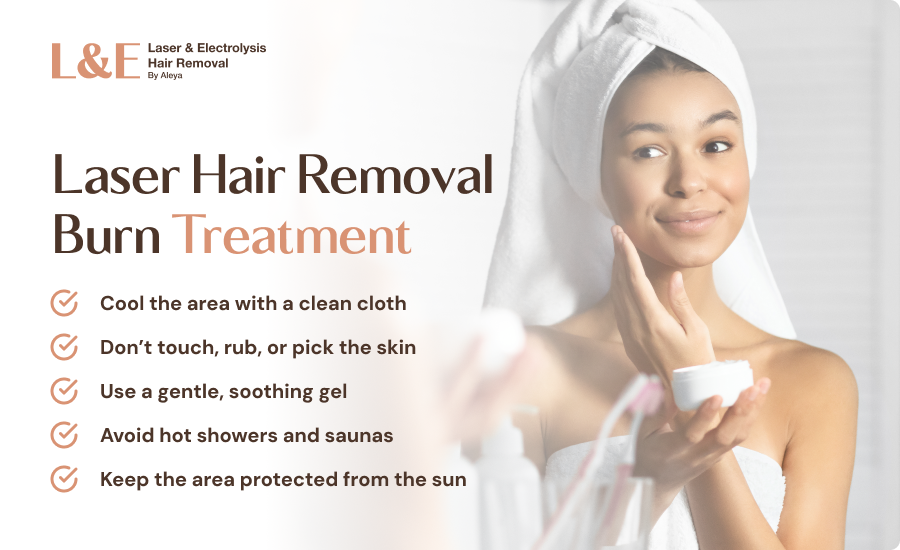
How Long Does a Laser Burn Take To Heal?
Mild laser hair removal burns typically resolve within one to two weeks, while deeper or more serious burns might take longer and require targeted aftercare, such as post-laser balms or barrier creams.
Keep a close eye on the area and contact your provider if there’s no noticeable improvement within a week.
Classification of Burns (And What That Means for Laser Reactions)
Not all burns are the same, and thankfully, most laser-related burns are mild.
But it’s helpful to understand how burns are medically classified, especially if you’re trying to gauge the severity of a skin reaction after a session.
Here’s a quick breakdown of the three main types:
1. First-Degree Burns (Superficial)
First-degree burns are the most common type associated with laser hair removal.
They only affect the top layer of skin (the epidermis) and feel similar to a mild sunburn.
What it looks like:
- Redness
- Warmth or tightness
- Mild swelling or discomfort
- No blisters
2. Second-Degree Burns (Partial-Thickness)
Second-degree burns go deeper, affecting both the outer and second layers of skin (epidermis and dermis).
They’re rare with professional laser treatments but can happen if the wrong settings or laser type is used.
What it looks like:
- Blisters
- More intense redness or swelling
- Shiny skin
- Moderate to severe pain
3. Third-Degree Burns (Full-Thickness)
Third-degree burns are extremely rare and should never happen with a properly performed cosmetic treatment.
Third-degree burns damage both layers of skin and can even reach deeper tissues.
What it looks like:
- White, leathery, or charred appearance
- No feeling in the area (due to nerve damage)
- Immediate medical attention required
If you ever suspect this level of burn after a laser treatment, seek urgent medical care.
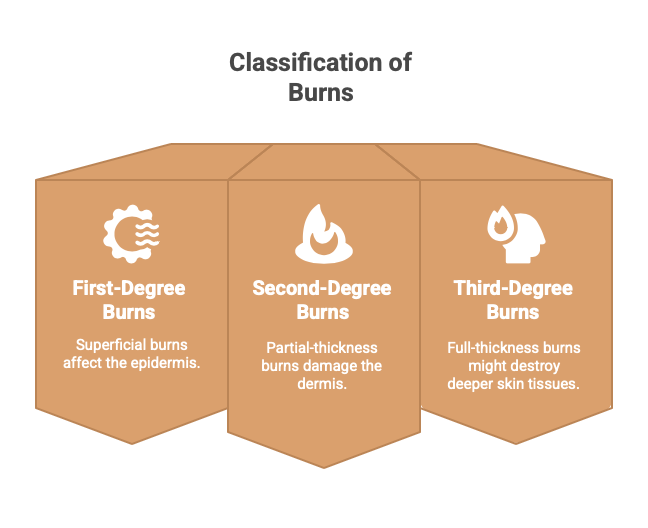
Avoid Laser Burns With Safe, Expert Treatment at Laser by Aleya
At Laser by Aleya, we don’t just aim for smooth skin; we prioritize your skin’s health at every step.
Our licensed technicians use the most advanced lasers, carefully calibrated for your skin tone and hair type, minimizing the risk of burns or irritation.
We guide you through every step, from your first consultation to post-treatment care, so your laser journey feels smooth, safe, and completely worth your investment.
Laser Hair Removal Burns: FAQs
What causes laser burns during hair removal?
Laser burns usually happen when the:
- Settings are too high
- Skin isn’t properly prepped
- Wrong type of laser is used for your skin tone
What do laser burns look like, and how do they feel?
Laser burns can show up as red, swollen, or blistered spots that feel hot, sore, or stingy, kind of like a bad sunburn.
In more serious cases, the skin might darken, peel, or scab over as it heals.
How long do laser burns take to heal?
Most mild burns clear up in about one to two weeks.
If the burn is deeper, healing can take longer and might need special care, like barrier creams, cooling gels, or even a visit to a dermatologist.
Can laser burns cause permanent damage?
In most cases, no, especially if you treat them properly.
But deeper burns can sometimes leave behind dark spots, light patches, scarring, or a change in skin texture.
How can I prevent laser burns?
The best way to avoid burns is to prep your skin correctly and choose a skilled technician.
Make sure you:
- Shave the area before your session
- Skip any skincare products that day
- Avoid tanning
Also, ensure your provider is using the right laser and settings for your skin tone
Should I see a doctor if I think I have a laser burn?
If your burn is blistered, spreading, or extremely painful, or if you notice signs of infection-like pus or foul odor, see a dermatologist right away.
Mild redness and swelling are normal, but anything beyond that deserves expert attention.
Can I still do laser hair removal after getting a burn?
Yes, but only after your skin has fully healed. Your laser specialist might need to adjust the laser type or settings for future sessions.
Always share your history of skin reactions so they can keep your treatments safe and effective.
What should I avoid if I have a laser burn?
Skip hot showers, saunas, makeup, and exfoliants for at least 48 hours.
Avoid picking at the skin or using fragranced products, and stay out of the sun until you’re fully healed to prevent scarring or pigmentation changes.
